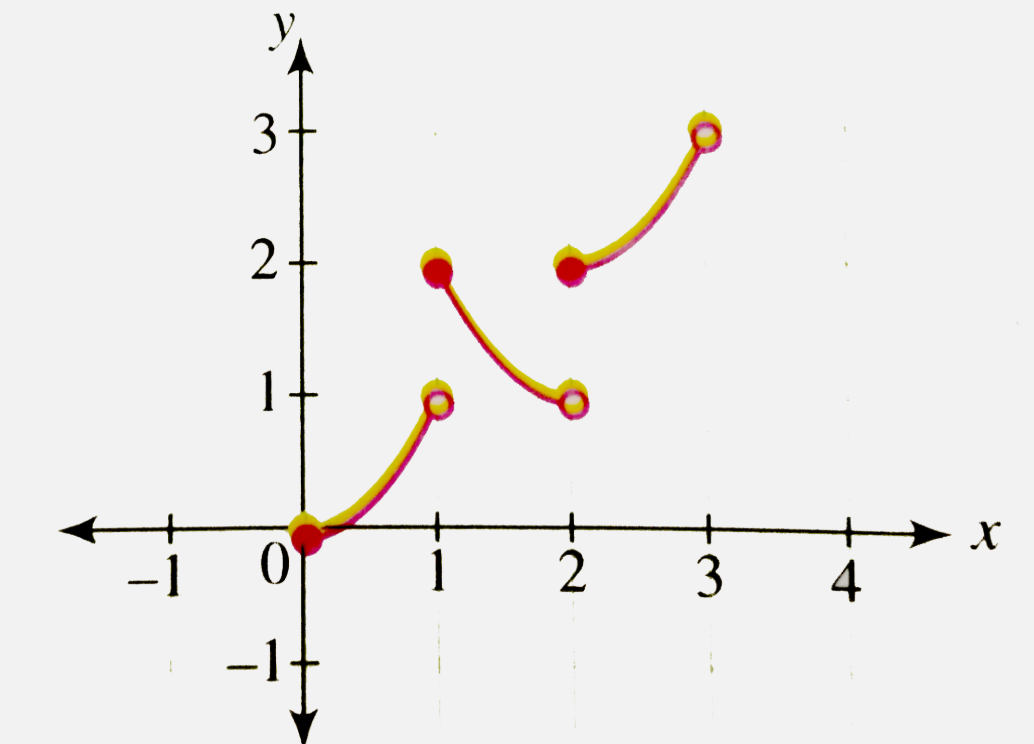If f(x)=x(x−1) is a function from [12,∞)→[−14,∞), then {x∈r:f−1(x)=f(x)} is a. null set b. {0,2} c. {2} d. a set containing 3 elementsSolution in Tamil
null set
{0,2}
{2}
a set containing 3 elements
The correct Answer is:C
{x∈R:f−1(x)=f(x)}
={x∈R:(f(x))=x}
f(f(x))=f(x(x−1))=[x(x−1)][x(x−1)−1]
=x(x−1)[x2−x−1]
Now, f(f(x))=x
⇒ x(x−1)(x2−x−1)=x
⇒ x(x3−2x2)=0
⇒ x=2(∵x∈[12,∞))
Topper's Solved these Questions
- FUNCTIONSBOOK - CENGAGECHAPTER - FUNCTIONSEXERCISE - Multiple Correct Answers Type
10 Videos
- FUNCTIONSBOOK - CENGAGECHAPTER - FUNCTIONSEXERCISE - Comprehension Type
7 Videos
- EQUATION OF PLANE AND ITS APPLICATIONS -IIBOOK - CENGAGECHAPTER - EQUATION OF PLANE AND ITS APPLICATIONS -IIEXERCISE - DPP 3.4
18 Videos
- GETTING STARTED WITH GRAPHSBOOK - CENGAGECHAPTER - GETTING STARTED WITH GRAPHSEXERCISE - Exercise
18 Videos
Similar Questions
The function f(x)=cos−1⎛⎝2[|sinx|+|cosx|]sin2x+2sinx+114⎞⎠ is defined if x belongs to (where [.] represents the greatest integer function)
View SolutionLet f(x)=x2−2x−1∀x∈R Let f:(−∞,a]→[b,∞), where a is the largest real number for which f(x) is bijective. If f:R→R , g(x)=f(x)+3x−1 , then the least value of function y=g(|x|) is
View SolutionLet A(0,6,6), B(6,6,0) and C(6,0,6) are three points and point D is moving on the line x+z−3=0=y. If G is centroid of ΔABC, then minimum value of GD is
View SolutionDoes the following graph pass the vertical or horizontal line test ?

View SolutionLet f(x)=a^(x)-x ln a, a> 1. Then the complete set of real values of x for which f(x)>0 is (a)(1,oo)(b)(-1,oo)(c)(0,oo)(d)(0,1)
View SolutionIf f(x)=x(x−1) is a function from [12,∞)→[−14,∞), then {x∈r:f−1(x)=f(x)} is a. null set b. {0,2} c. {2} d. a set containing 3 elements
View SolutionIf the function f:[1,oo)to[1,oo) is defined by f(x)=2^(x(x-1)) then f^(-1) is
View SolutionIf the function, f:[1,oo]to [1,oo] is defined by f(x)=3^(x(x-1)) , then f^(-1)(x) is
View SolutionLet f:(−∞,2]→(−∞,4] be a function defined by f(x)=4x−x2. Then, f−1(x) is
View Solutionयदि फलन f:[1,∞)→[1,∞),f(x)=2x(x−1) द्वारा परिभाषित है, तो f−1(x) है
View SolutionLet f be the function f(x)=cosx−(1−x22). Then (a) f(x) is an increasing function in (0,∞) (b) f(x) is a decreasing function in (−∞,∞) (c) f(x) is an increasing function in (−∞,∞) (d) f(x) is a decreasing function in (−∞,0)
View SolutionLet f:(0,∞)→R be a differentiable function such that f'(x)=2−f(x)x for all x∈(0,∞) and f(1)=1, then
View SolutionIf f(x)=x(x−1) is a function from [12,∞)→[−14,∞), then {x∈r:f−1(x)=f(x)} is a. null set b. {0,2} c. {2} d. a set containing 3 elements
View SolutionIf f(x)={x3,ifx2<1andx,ifx2≥1 then f(x) is differentiable at (a) (−∞,∞)−{1} (b) (−∞,∞)−{1,−1} (c) (−∞,∞)−{1,−1,0} (d) (−∞,∞)−{−1}
View SolutionIf the function f:[1,oo)->[1,oo) is defined by f(x)=2^(x(x-1)), then f^-1(x) is
View Solution
